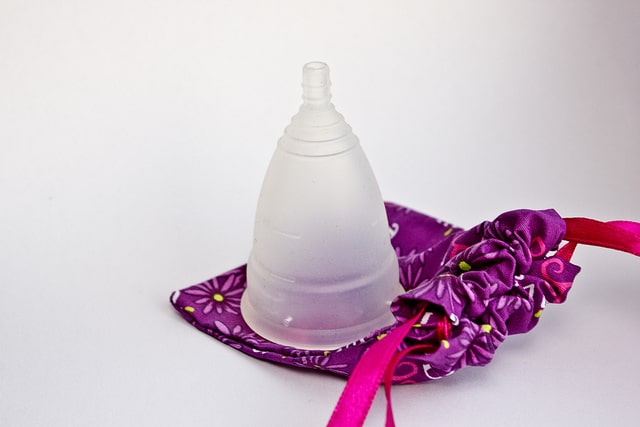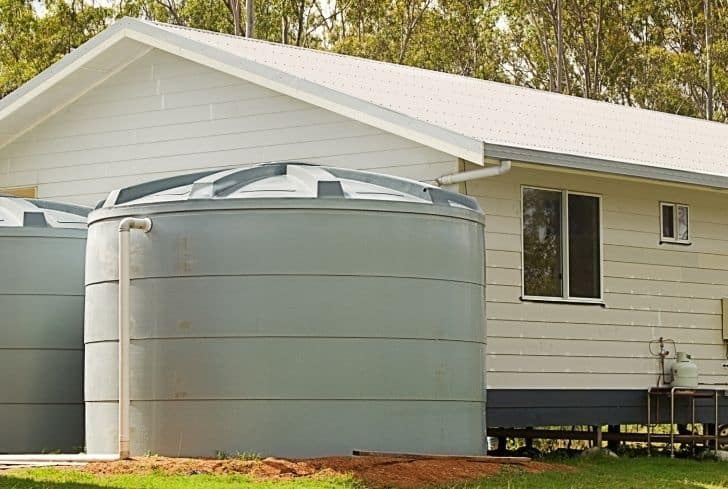Are Disposable Pads and Tampons Harmful to the Environment?

This is something you’ve maybe never thought of…
Disposable pads and tampons—are they actually that bad for the environment? After all, something like an OB tampon is a tiny piece of cotton, which is biodegradable. Maybe it’s not so bad? Or, maybe it is, especially considering the cumulative effect of it over a lifetime. It’s kind of a complicated question and there are no easy answers. We’ll try to figure out it though!
Let’s explore the issue in more detail to find out if pads and tampons really are that harmful to the environment.
How Many Pads and Tampons is it Exactly?
The average woman uses between 11,000 and 16,000 tampons in the course of her lifetime. According to online menstrual pad calculators, if you start menstruating at 12 years of age, and use 20 pads per period, you’ll use around 11,000 of these as well.
Of course, this really depends on how heavy and/or long your period is. Some people soak through a jumbo tampon in only a couple of hours, while others never use more than a regular tampon. Period length varies as well, from 3-7 days or even more.
The other factor is what kind of pads and tampons you use. If you use something like an OB tampon (no applicator) compared to a regular one, you’re producing around 58% less waste. Or, compare a pantyliner to a nighttime pad—the difference in the amount of materials is obvious.
According to the book, “Flow, the Cultural History of Menstruation,” the total amount of pads and tampons ends up being 250-300 pounds of trash during a lifetime of menstruating. Overall, it ends up being around 0.5% of a woman’s overall trash load during that time.
The Problem with Plastic
Plastic pollution is a serious problem and not one that should be treated lightly. Pads and tampons are made mostly from cotton, but do contain plastic components. Some tampons use plastic applicators; even OB tampons which don’t use applicators are wrapped in a plastic packaging. Pads use plastic for the waterproof backing, as well as for the part that goes next to your skin.
According to this article, here are only a few of the negative effects that plastic has on our environment:
- Implications for animals
- Implications for human health
- Land, air, water, and groundwater pollution
- Interference with the food chain
- Economic losses and tourist distraction
Plastic is hard on our Earth, and reducing this kind of waste goes a long way to making it a better place for everyone.
The Problem with Non-Organics
Non-organic pads and tampons are hard on the environment. A big part of the problem is that nobody (except for the manufacturers) really knows what’s in them. In the USA, pads and tampons are classified as “medical devices” by the FDA, and are therefore not required to disclose this information. Activists are pushing for legislation that will change this, but there have been no breakthroughs. Hopefully this will change soon.
According to the New York Times, here are a few of the things that are suspected to be in these products.
Pesticide Residue
Cotton is not a food product, and as a result, pesticides are used heavily on it. Some residue from these products can often be found in pads and tampons. Some of it also ends up in our groundwater supplies, causing contamination.
Toxic Dioxins
One of the big concerns about non-organic pads and tampons is whether or not they contain potentially toxic dioxins. They can result from bleaching, or purifying cotton and rayon with chlorine. There has been some research into primates which links these compounds to endometriosis. These dioxins also end up in our soil and water supplies, which ends up hurting the entire ecosystem.
Other Added Ingredients
The last area of concern are the fragrances, gels, and other additives in pads or tampons. They aid in absorption, prevent odours, or provide adhesion. It’s unclear what these things are exactly, and if they are harmful to the environment, or our bodies.
What can you do?
Use organic pads and tampons. They’re a bit more expensive, but much better for your health, as well as the environment.
Is there a Solution?
Disposable pads and tampons create a lot of waste that goes to the landfill. Much of it is non-biodegradable. They also create pollution of the land and water from the cotton growing process, as well as the manufacturing process. Organics are slightly better, in that they don’t pollute the environment. However, there is still the waste problem to consider.
Is there a better solution than just going organic? The good news is that there is—consider making the switch to reusable feminine hygiene products. By reusables, I mean a menstrual cup, reusable cloth menstrual pad, or a pair of period panties. Here’s a bit of information about each of these eco-friendly period solutions.
Menstrual Cups
Menstrual cups are cylinders that are made from medical grade silicone and designed to collect menstrual fluid. They basically replace tampons. There are a few advantages to using them including the following:
- The environment. One single menstrual cup can replace up to 10 years worth of pads and tampons. Depending on where you live, they can also be recycled.
- Health reasons. It’s a chemical free period experience.
- Cost effective. Around $30 up-front, but then savings for years and years down the road.
It’s not all glitter and gold, unfortunately! There is a bit of a learning curve with menstrual cups and it takes most people 3-4 cycles to get the hang of them. However, most people do eventually figure it out, so the key is be patient with yourself and not give up.
Cloth Menstrual Pads
Another great option for an eco-friendly period are cloth menstrual pads. The best ones are made from organic cotton, and can last for up to 10 years. Although they do cost around $5 per pad, there will be years of savings, as well as far fewer sanitary products going to the landfill. Most of them are made from all-natural materials so will biodegrade once thrown into the landfill.
Period Panties
The last option I’ll talk about for an eco-friendly period is period panties. They are like regular underwear, but contain extra, absorbent padding. Although they’re not as absorbent as a regular pad, they offer some extra protection when wearing a tampon or menstrual cup. They last as long as a regular pair of panties would, and can replace hundreds of disposable pads.
Here’s to an eco-friendly, healthier, cheaper period experience!
Bio:
Jackie Bolen is a tree-hugging, friend of the Earth who can often be found paddling the rivers, on top of a mountain, or drinking organic coffee around Vancouver, Canada. Her hope is that one day, a reusable feminine hygiene will be found in the hands of every single menstruating person in the world because this has the potential to change it for the better.
Twitter: www.twitter.com/bolen_jackie
Pinterest: www.pinterest.com/jackiebkorea/
Facebook: www.facebook.com/menstrualcups1234/






